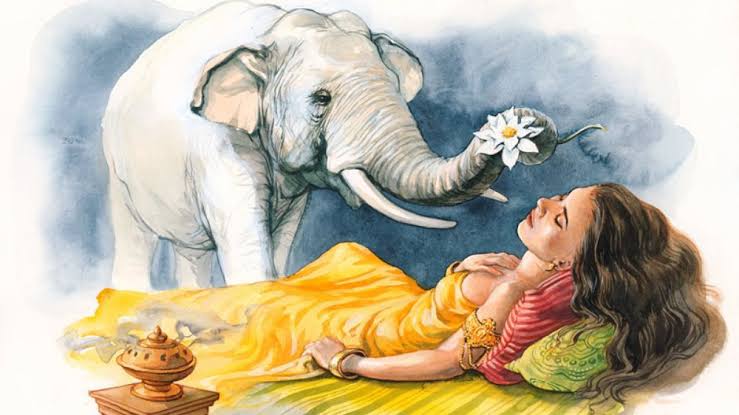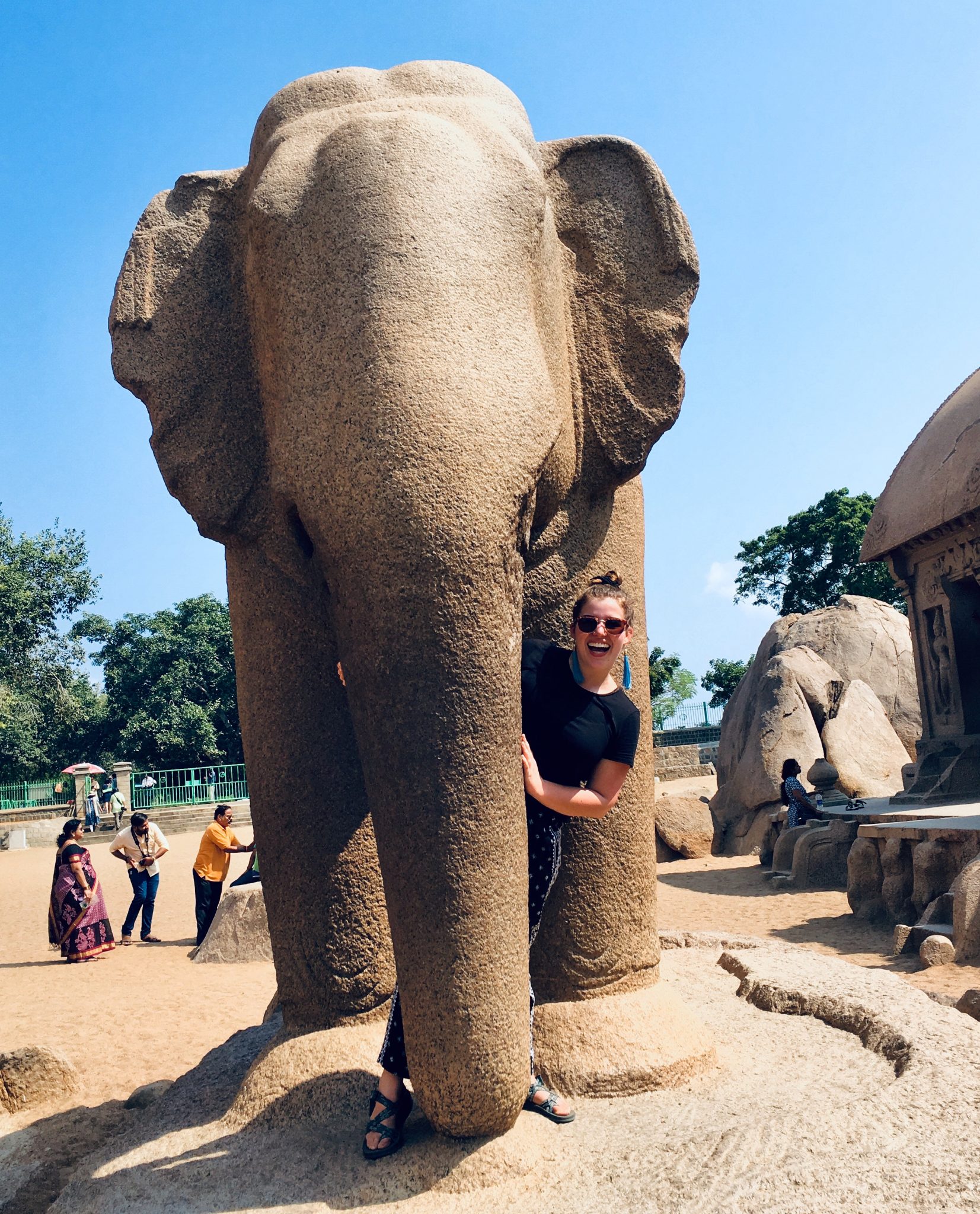All Over India
Month of January
Anna Manning

A painting of the queen’s dream from the Buddhist myth.

An elephant carving from a group of Monuments at Mahabalipuram.

Elephants guards at a Jain Temple
Imposing and powerful, worshipped and revered, intricately carved into statues and temple walls: elephants play a vital role in Indian religions. Cool smooth marble or rough warm stone elephants can found from the chilly northern tip of India to sweltering southern curve.
Universal Meaning
Before stepping foot in India, I was determined to see an elephant. Throughout our stay there I realized that this dream was not quite realistic. Despite not having seen a single live elephant I saw about every other portrayal of an elephant possible. From the pot-bellied statues of Ganesha to intricately patterned elephant tapestries, these creatures play a vital role throughout India. Interested in the diversity of elephant symbolism I researched their different identities throughout popular religions.
In Hinduism, Ganesha is the most important symbol of the elephant. The god of wisdom and remover of obstacles, Ganesha symbolism is seen throughout India. In Hindu mythology, he is the son of Parvati and Shiva. Parvati is said to have crafted Ganesha from clay to protect her. One day Parvati told Ganesha to not let anyone disturb her. Following his mother’s order, Ganesha refused to let Shiva see Parvati. In a rage, Shiva cut off his son’s head. Realizing his mistake, Shiva ordered his men to bring back the first head they could find. The photo above is not actually of a Hindu temple but from a group of monuments at Mahabalipuram. People sponsoring Hindu temples went there to pick what carvers and styles they wanted. The existence of these elephant statues demonstrates their importance within the Hindu religion.
Similar to Hindu’s, Buddhist also revere elephants. A white elephant is significant in the story of Siddhartha’s transformation into the Buddha. The story goes that Siddhartha’s mother was sleeping in the palace one night when she had a spiritual dream. In this dream, she was taken from the palace by spirits bathed and dressed in holy fabric. After this, a white elephant, holding a white lotus, circled her three times before entering the right side of her stomach. Elephants are a classic symbol of strength, wisdom, and patience. Throughout Buddhism, elephants are believed to represent the epitome of the Buddha. This depiction of the queen’s dream online that shows a protective white elephant standing over the sleeping queen.
While elephants are not as established in Jainism as in Hinduism and Buddhism, nonetheless they play an important role in Jainism. During our visit to Bhagwan Parshwanath Dham, the Jain temple in Hyderabad, we saw that the temple was guarded by two stone elephants. These marble elephants were placed on either side of the temple’s door, almost like guards. Our guide told us that the elephant’s statues were put in place as a symbol of protection for the temple.
Although portrayed in all three religions and shown in various locations, elephants attributes appear to be very consistent throughout India. They are always portrayed as wise protectors, guarding and leading their worshippers to be stronger followers of their faith. India is a country with so many diverse beliefs and practices. Therefore to have found such a clear similarity in the portrayal of elephants shocked me. The fact that a single animal, like an elephant, was able to cross religious borders and still retain its general meaning amazed me. Despite the many differences and tensions within India, the elephant maintains a near-sacred standing in Indian religions. As someone with a passion for elephants, I enjoyed constantly seeing them around India, even if they were not alive.
